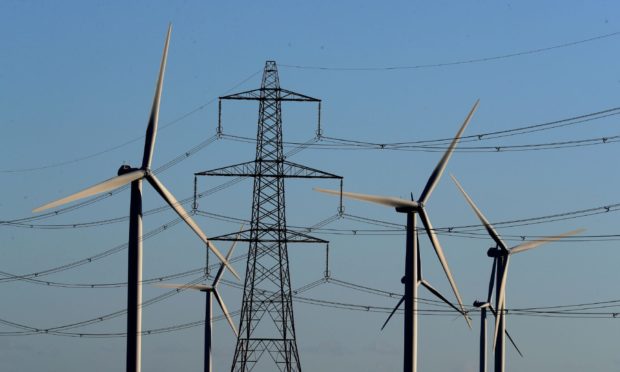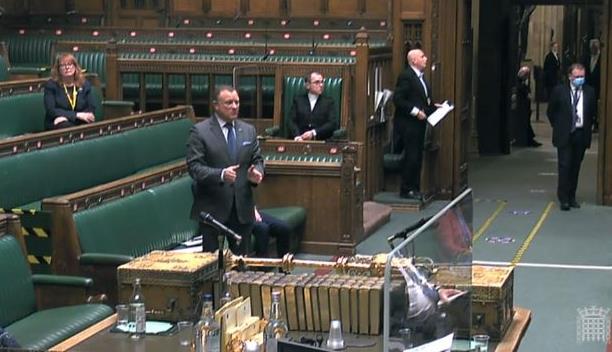Consumers in northern Scotland have been overcharged for electricity bills for years because of a “distortion” in a UK Government initiative, we can reveal.
The Westminster government was warned about the issue in 2019 and is finally proposing to take action.
It could help ease the pain caused by rocketing power prices as the current cost of living crisis hits households across Grampian, Tayside and the Highlands and islands.
Last night, SNP MP Drew Hendry branded the latest energy penalty faced by northern Scotland as a “disgrace” that must be “urgently rectified”.
The distortion relates to an imbalance in the charging system that funds a subsidy system called the Hydro Benefit Replacement Scheme (HBRS).
The initiative was designed to ensure north of Scotland consumers do not face even higher bills, although campaigners say it does not go anywhere near far enough.
Under the system, power suppliers are charged in order to help ease the burden on the north, with the assistance amounting to £92.7 million last year.
Ofgem estimates average bills in northern Scotland would be about £60 a year higher without the HBRS.
However, instead of simply charging suppliers, the way it is currently operating has now been found to have actually benefitted suppliers who contract with “embedded” generators to the tune of about £49 million over three years.
These types of suppliers are often linked to onshore windfarms, or other smaller scale generators, such as combined heat and power plants and solar farms.
An analysis has concluded that ending this “embedded benefit” would reduce the overall tariff on suppliers by 18%, because more of them would be paying overall.
‘Consumer benefits’
A UK Government report said: “A reduced average tariff spread across a greater number of players, in addition to introducing a greater degree of neutrality between transmission and distribution connected generation, would also likely result in consumer benefits, as they would no longer have to pay for the redistributive effects that arise from suppliers making these direct payments to generators.”
However, the government insisted it could not calculate how much households in northern Scotland had lost as a result of the issue.
“Estimating the size of this consumer loss is difficult due to the inherent complexity that arises from a multitude of different arrangements between suppliers and generators,” the documents said.
“Similarly, estimating the potential consumer benefits from the removal of the embedded benefit is also made difficult by this complexity.”
We previously revealed that in 2019, during the last review of the HBRS, the UK Government had been warned by National Grid ESO about the embedded benefit “distortion”.
It said the issue was undermining the delivery of the full benefit to affected consumers, especially those in fuel poverty.
The Department of Business, Energy and Industrial Strategy (BEIS) confirmed last year that it was investigating the anomaly.
In papers published last week as part of a new scheduled review of the HBRS, the government has now admitted the distortion exists.
It said: “The government has assessed this and found that an embedded benefit does arise from the net changing basis of the scheme, with the likelihood that this results in higher overall consumer costs.”
‘Yet another UK Government mistake’
Mr Hendry, the SNP MP for Inverness, Nairn, Badenoch and Strathspey, said: “The north of Scotland has been overlooked by the UK government for far too long, all at the detriment of the families and individuals who live and work here.
“Many Scots living in the north will be scratching their heads as to why, when they’re able to see clean renewable energy being generated in their back gardens, they continue to be charged more for electricity than anywhere else in the UK.
“It should be unthinkable that energy rich regions like the Highlands and Islands, also have the highest rates of fuel poverty across all nations of the UK.
“That this latest additional energy penalty is down to yet another UK government mistake, one that has punished northern Scots for years, is a disgrace and must be urgently rectified.”
To remove the benefit to embedded suppliers, the government proposes that the scheme’s supplier charge should in future be calculated on the basis of gross rather than net demand.
It said this would mean suppliers are charged according to their total share of electricity use irrespective of its source, bringing it into line with supplier charging arrangements already in place for the Capacity Market and Contracts for Difference.
Jamie Stone, Liberal Democrat MP for Caithness, Sutherland and Easter Ross, said: “I welcome the government’s commitment to fix this distortion to ensure that households in the north of Scotland receive the full benefit of the Hydro Benefit Replacement Scheme.
“That said, we all know that this change will not touch the sides of the cost increases consumers in the north are currently experiencing.
“The government needs to go further by urgently expanding its windfall tax on oil and gas giants. It is not right that energy companies are raking in record profits while people cannot afford to pay their bills.”
Crippling costs
Billpayers in the north of Scotland have long complained about being hit with the highest power charges in Britain, while also suffering the worst rates of fuel poverty.
The crippling costs are a result of global price rises, the colder weather, the lack of alternatives such as gas in rural areas, as well as a controversial pricing system for distributing electricity that divides the UK into 14 regions.
The north of Scotland region includes Tayside, Grampian and the Highlands and islands.
The region consistently pays the highest distribution costs in the UK, but the gap between the north and the rest of Britain would be even wider without the HBRS.
The scheme dates back to the 1940s, when it was acknowledged that the high costs of providing power to remote consumers in the Highlands and Islands should be offset by the contribution of small hydro-electric stations and dams in the area.
Under law, it must be reviewed every three years.
In the new consultation, launched on Friday, the government does not recommend changing the objectives of the HBRS.
However, it does plan some “minor technical improvements”, including basing the inflator on the consumer price index instead of retail price index.
The consultation runs until September 23.



Conversation